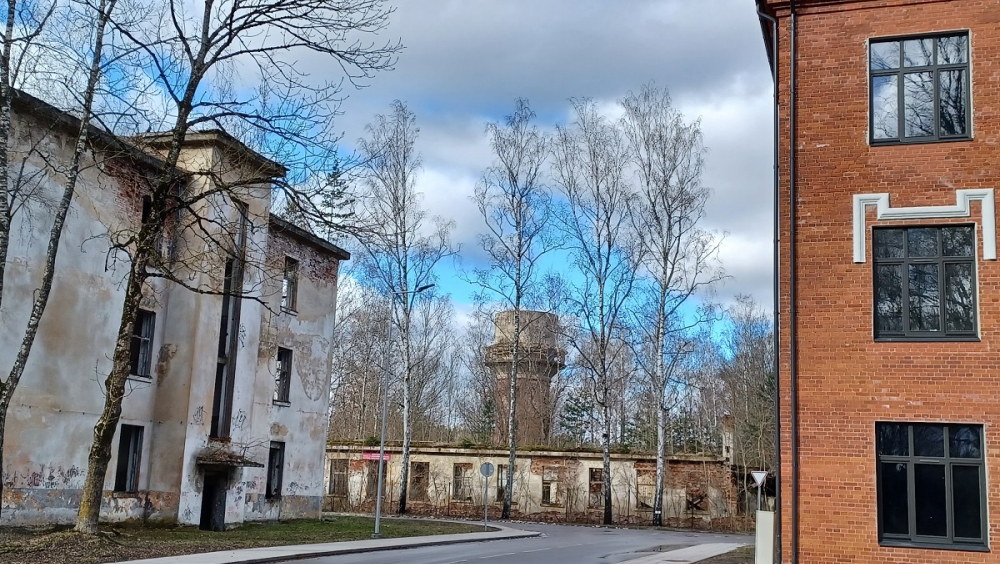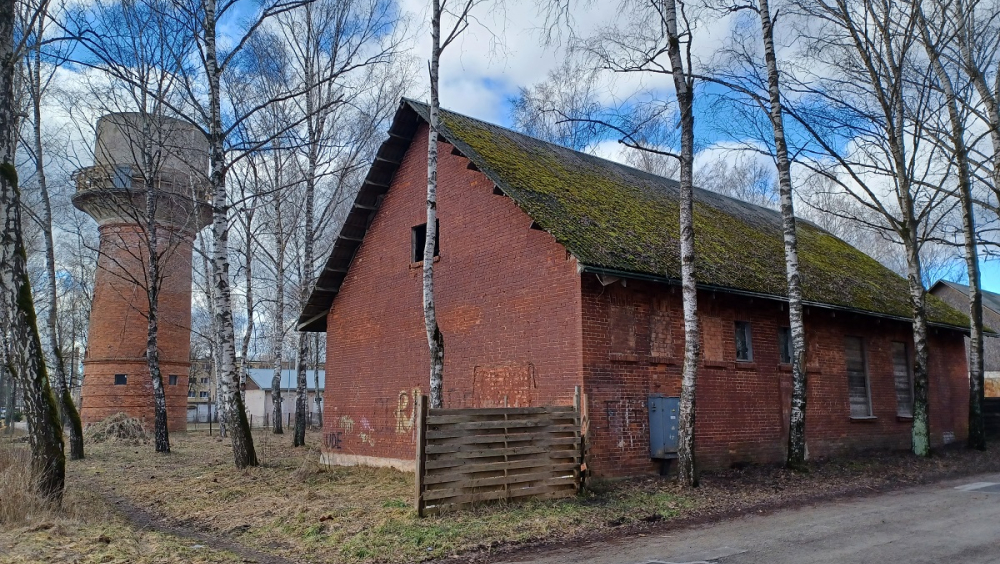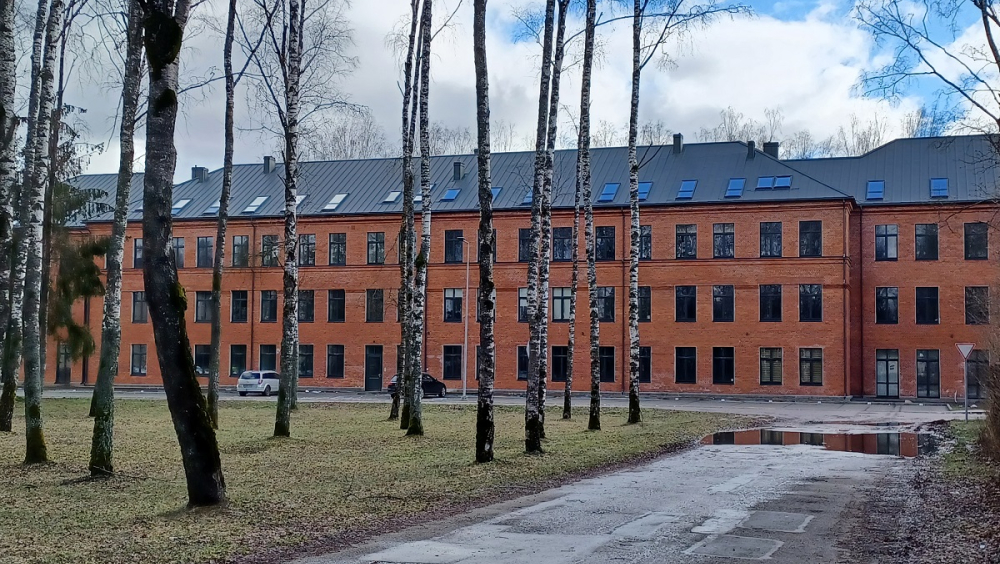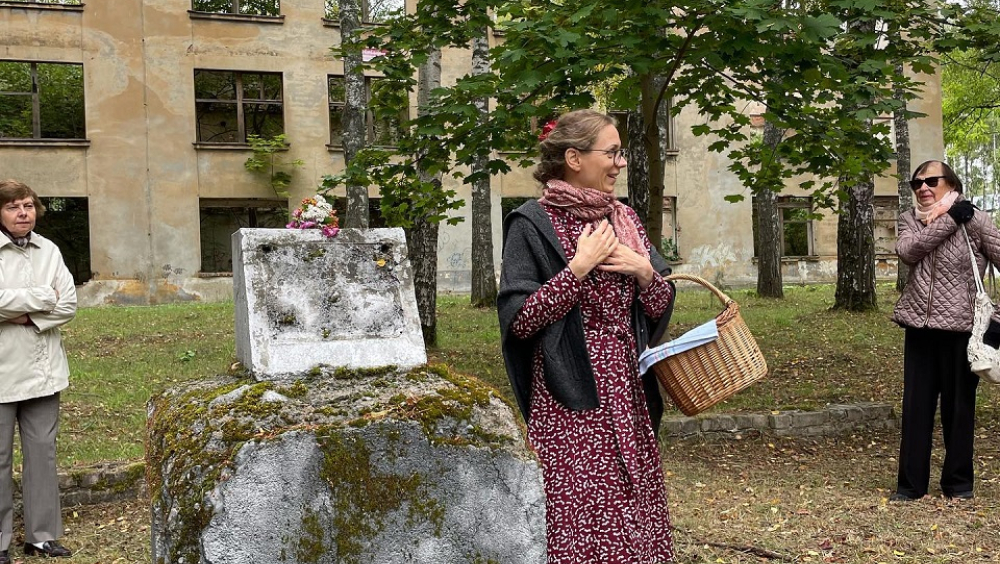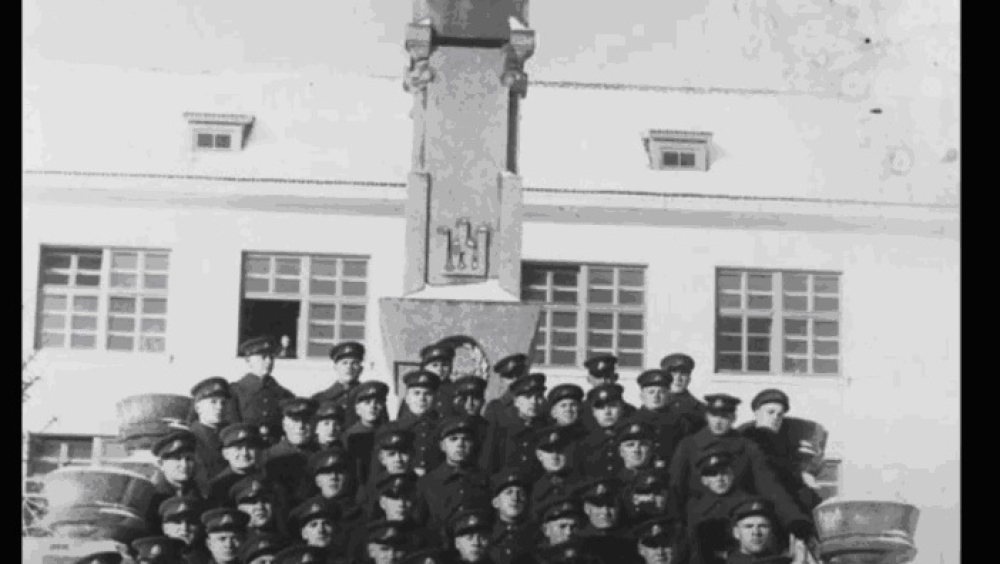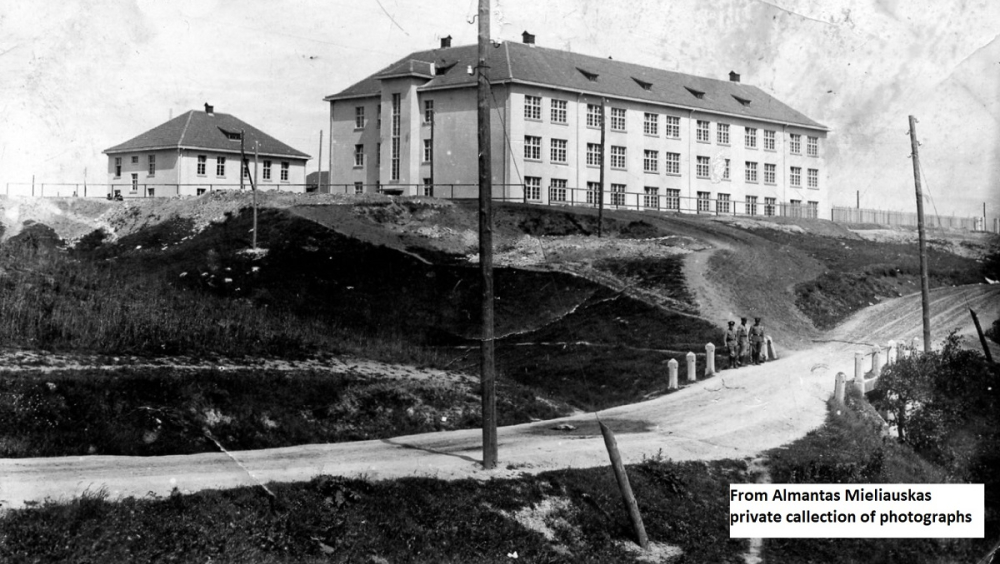An interwar romance. Prienai military town: love, porridge and peace.
Country
Lithuania
Organization name
Dzūkija-Suvalkija Protected Areas Directorate
Storyteller
Rūta
E-Mail: milusauskaite@yahoo.com
Overview
Prienai garrison - built in 1935-1939, is an example of interwar modern architecture, which has a status of architectural heritage. It is undoubtedly a symbol of Lithuania's independence and freedom.
The garrison operated only for four years, then served the Soviets. Later it was abandoned and currently some of the buildings are used for various civil purposes.
The goal of my story is to return to the interwar period, when Lithuania strengthened its statehood, gained experience from Europe and convey the thoughts of the past era to modern visitors. Thus the idea was born to organize a theatrical guided tour, to tell not only the history of the garrison, but also to create an interwar spirit. Live story, mood and feedback initiate the sharing of thoughts, remembering of past events and details, thus enriching our heritage.
It is Friday, May 28 1937. Marytė Bendoriūtė receives a letter from her beloved Vincas - a private soldier. This is the beginning of the story of Prienai military town that I want to tell you. I’ll put on interwar shoes and a dress, fix a flower in my hair and ... I’ll go as if on a date and as if it was 86 years ago.
The construction of the Prienai military town began in 1935 in an open field, on the banks of the river Nemunas, on the outskirts of Prienai town. In four years, 20 buildings sprouted in the complex, 14 of them made of brick. Barracks, a commandant's office, a canteen with kitchen, a laundry, a hospital, stables, a food cellar, a water tower, food, animal fodder and ammunition warehouses and other buildings all made up a closed, fully functioning military base. The construction was led by Colonel Engineer Juozas Barzda - Bradauskas. The actual architect is not known.
There are about twenty military towns in Lithuania. Some of them are from the period of Tsarist Russia, others from the interwar period of Independent Lithuania, and the third group from the Soviet era. Towns often changed hands as the political situation changed.
The Prienai military town was built specifically for units of the Lithuanian state army. In 1918 after the restoration of independence in Lithuania, an army was created, the country's defense was strengthened and former tsarist barracks were adapted for state needs. In ten years (1930-1940), nine new military complexes were built. They became seats of culture, which were also visited by civilians. Plays, cinema and concerts were shown, libraries were active. Not all of the expected constructions were fully completed because World War II broke out.
"In the morning we heard a rumbling that gradually got closer. A line of tanks was approaching. They drove into the military town with a group of trucks and surrounded the barracks with the men sleeping there - a tank in front of each window of the barracks. They drove all the sleeping people outside, put them in trucks and took them away. The barracks were left empty." That was the end of Prienai military town after just four years in Independent Lithuania. This is an extract from Juozas Šadzevičius’ written memoirs. He was a resident of Prienai and served in the barracks of the Prienai military town at the time. These memoirs were shared by a local researcher who participated in Marytė's tour. We anticipate with the greatest pleasure and motivation these recollections and fragments of memory.
I (Marytė) - am cheerfully walking around the military town and treat my accompanying guests with oranges - a rare treat that I received as a gift from my own soldier boy. A spring is flowing, flowers are blooming, my boy friend is waiting. What more does a young heart need? I know the routine in the military town –the time when the soldiers get up, when they exercise, when they wash their feet, when they can be visited. Here is the commandant's office, the barracks, the canteen and the club, the boiler house... I know what is happening outside the military town as well - how the brewery is working in Prienai, how the local journalist Matas Šalčius travels around South America, what songs are popular, what cinema is the most fashionable. I'm just wondering when my cavalier will finish his service and when we can start a family.
Maryte doesn’t care that the barracks building where her beloved Vincas sleeps is now ruined, that the commandant's office is a family doctor’s surgery to which sick patients hurry for treatment, that there is no longer a drop of water in the water tower, and just a furnace is left from the boiler house. It doesn't matter to her at all that a Social Services Center now operates in the weapons warehouse, that now the fire station of the city of Prienai, the Prienai biker club, and car repair workshops are located in the former warehouses. Interwar melodies are playing in her head, great humour and unlimited fantasy take her back to the happy years of peace in Lithuania.
Of the former 20 buildings only 13 brick ones are left. No single wooden building survived. In 1937 a monument to the Grand Duke of Lithuania, Kęstutis, the patron of the regiment, had been erected. It was brutally demolished in 1954. After the regaining of independence, it was rebuilt in another place. The former surrounding open land is now richly covered with trees, bordered by a fast-flowing stream and the largest Lithuanian river, the Nemunas. The Prienai garrison these days reflects and contrasts with former times. Some buildings are ruined, others are modernly equipped and functional. Some paths are green, the others are newly paved.
The townspeople are pleased about the new life of the military town. Marytė is happy as well. Only one wish - she would like to see each building marked with a commemorative plate with a record of its actual original purpose and the date of construction. These symbols would bring the fragmented complex back together - to the common goal - for Independent Lithuania! It would be so good if a professional photographer's eye captured the changing face of the military town and published to Europe the big history of a small town.
Marytė and her beloved Vincas are the only fictional part of my story - everything else is real. Although I don't even doubt that there would have been love. Conducting tours means bringing culture back to a military campus. And after the excursion, enjoying tea and army porridge - to communicate and, maybe... await a real love story.
European Dimension
The establishment of the Prienai military town was directly influenced by European events. World War I ended, Lithuania proclaimed the restoration of independence, but threats remained. From 1919 until 1939 the Vilnius region was occupied by Poland. The capital had to be moved to the second largest city - Kaunas. The new army needed military bases. Prienai was in a good strategic location - just 40 km from Kaunas.
It is believed that architect Algirdas Šalkauskis (the architect is not known for certain) used his template project design for barracks to build the Prienai military town. Algirdas Šalkauskis is the accepted author of three military projects. He graduated from Dresden, Germany. Prienai barracks were considered to be modern and meet the design standards of the time: water supply, sewage, electricity, and central heating. The complexes are designed according to strict geometric planning principles.
Nijolė Steponaitytė, an expert in military architecture, affirms that "the architecture of the buildings reflected the latest architectural trends of European military buildings". The start of World War II brought the the end of the Prienai military town. After the Baltic countries, Finland, Romania and part of Poland got a Russian ultimatum, only the Finns resisted with arms. The military town of Prienai, like the others, was occupied by the Soviet army.
The interwar period was special for Lithuania, especially for the temporary capital Kaunas. After freeing ourselves from Imperial Russia, we willingly embraced Western culture. Architects implemented Western modernist ideas mostly in Kaunas. Western cars drove through the streets of the capital, women followed Parisian fashions and organized afternoon teas. There were women’s movements and charity events. Undoubtedly, the current events of that time also affected the life of the Prienai military town.
During the excursion we hear the voice of the Jewish singer Danielius Dolskis. The extremely popular performer re-sang the most famous European hits in Lithuanian. Interwar Lithuania breathed the spirit of the West.
